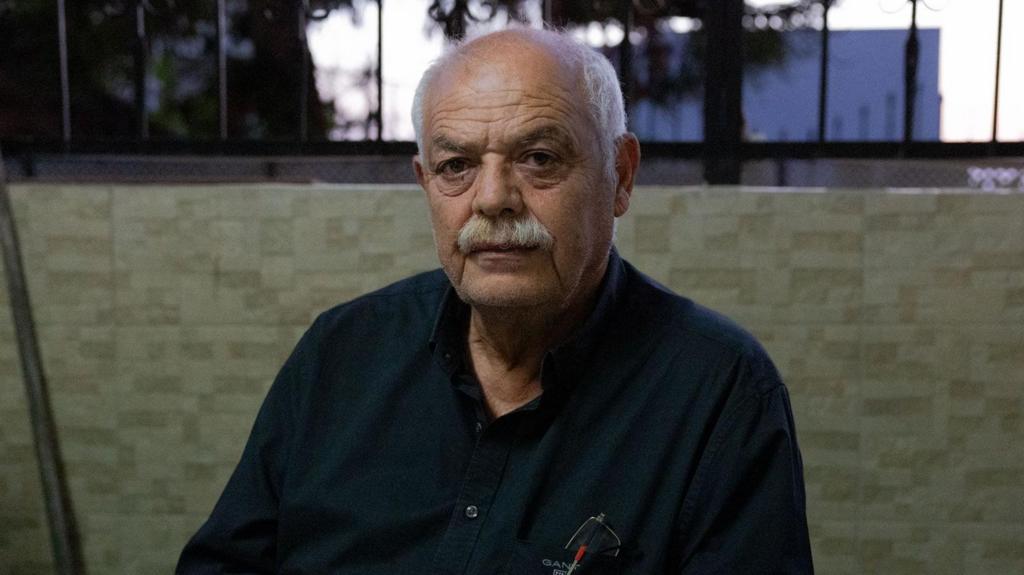“I am so angry,” says Kasem Abu al-Hija, 67, his voice heavy with grief. His statement encapsulates the devastation felt by many following a recent tragedy.
On Saturday, an Iranian missile struck his home in northern Israel, killing four of his family members. The concrete structure collapsed, leaving a scene of unimaginable destruction.
Eyewitnesses describe a horrific aftermath: personal belongings—books, clothes, children’s toys—mingled with human remains scattered across the road. The missile plunged the street into darkness, forcing rescuers to trace trails of blood to locate the victims.
The victims were identified as Kasem’s daughter Manar Khatib, 45; his granddaughters, Shada, 20, and Hala, 13; and their aunt, Manal Khatib, 41. Despite seeking refuge in the home’s reinforced safe rooms, the missile struck directly.
The family resided in Tamra, an Arab-majority town in northern Israel. Shortly after the attack, a video surfaced online, capturing the Iranian missiles descending on Tamra. A voice is heard shouting, “On the village, on the village,” followed by a group chanting, “May your village burn,” accompanied by whoops and applause.
“They sang about what happened to my family,” Kasem whispers, surrounded by grieving relatives at a vigil. This video, depicting Israelis celebrating the attack with anti-Arab chants, has drawn widespread condemnation in Israel, with President Isaac Herzog calling it “appalling and disgraceful.”
However, the anger in Tamra runs deeper. Like many Arab-majority communities in Israel, Tamra lacks public bomb shelters for its 38,000 residents, a stark contrast to the nearby Jewish-majority town of Karmiel (population 55,000), which boasts 126 public shelters.
This disparity has been a long-standing concern. Tamra’s location in northern Israel, near the Lebanese border, makes it particularly vulnerable to rocket attacks from Hezbollah. A previous attack in October 2024 seriously injured a resident.
While roughly a quarter of Israelis lack access to adequate shelters, this figure nearly doubles in non-Jewish communities, according to a 2018 report by Israel’s State Comptroller. Lital Piller of the Israel Democracy Institute notes that existing shelters in Arab communities are often inadequate, few in number, and poorly maintained.
The BBC has contacted Israel’s Ministry of Defense for comment.
Palestinian citizens of Israel, comprising a fifth of the nation’s population, legally possess equal rights but frequently report discrimination and second-class treatment. Following the 1990-91 Gulf War, Israel mandated reinforced safe rooms in new residential buildings, but Arab communities often face stringent planning restrictions, hindering the construction of these vital shelters.
Approximately 40% of Tamra’s homes have private safe rooms, forcing many to rely on neighbors during attacks, a perilous option given limited warning times. Ilan Amit of the Arab-Jewish Center for Empowerment highlights the vast difference: “I live in Jerusalem. Every building has a bomb shelter. Every neighborhood has a public bomb shelter.”
The stark reality of this vulnerability is evident in Tamra. As darkness falls, alerts blare, sirens wail, and residents, still reeling from Saturday’s trauma, scramble for safety, highlighting the urgent need for improved protection.
This shelter shortage is even more acute in unrecognized Bedouin communities in the Negev Desert. A young girl from such a community suffered a year-long hospital stay after being injured by missile fragments in April 2024.
The issue extends to impoverished Jewish communities as well. A recent Hebrew University survey reveals a significant divergence in public opinion: 82.7% of Jewish Israelis support the attack on Iran, while 67.9% of Arab Israelis oppose it; 69.2% of Arab Israelis reported fear, with 25.1% expressing despair.
Amit emphasizes the pervasive sense of neglect within Arab society, citing disparities in education, employment, and essential safety measures. Adel Khatib, a Tamra municipal official, summarizes the prevalent sentiment: “In the days since this happened, you can feel the anger.”
Official statistics reveal that 42.4% of the Arab population lived below the poverty line in 2023—more than double the national average. While a 2021 plan aimed to address these inequalities, the current government’s budget cuts have hampered progress.
These cuts, partly driven by the ongoing conflict in Gaza, have further exacerbated the existing challenges faced by Arab communities. Amit describes the situation as “Arab society…between a rock and a hard place,” caught between government policies and the wider regional conflict.
Mohamed Osman, a 16-year-old neighbor, reflects the collective grief and anger, sharing the tragic loss of Shada, a young woman with bright dreams extinguished by the violence.
At the vigil, community members gather, sharing their sorrow and a shared plea for peace. Kasem’s final words, “The bombs do not choose between Arabs or Jews. We must end this war. We must end it now,” resonate with a profound sense of urgency and shared humanity.
Photographs by Tom Bennett
The foreign secretary says charter flights from Tel Aviv will commence once Israeli airspace re-opens.
The Israeli military stated that the reactor’s core seal was targeted to prevent its use for “nuclear weapons development”.
Trump’s press secretary indicated the president believes there is a “substantial chance of negotiations” with Iran.
Israel condemned the attack as “criminal,” while Iran maintained it targeted a nearby site, not the hospital.
A hospital in Beersheba was struck during Iran’s missile barrage against Israel.

